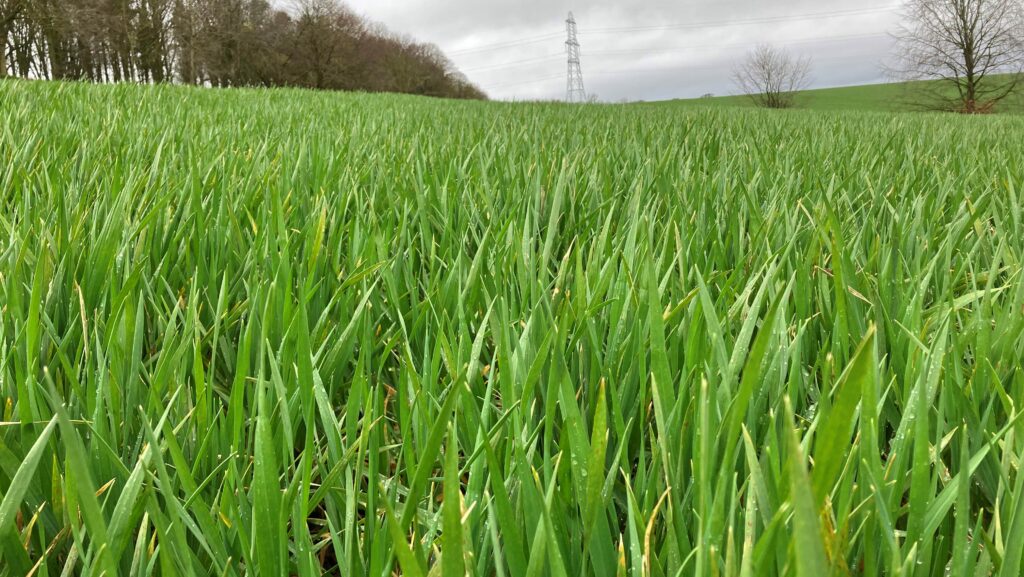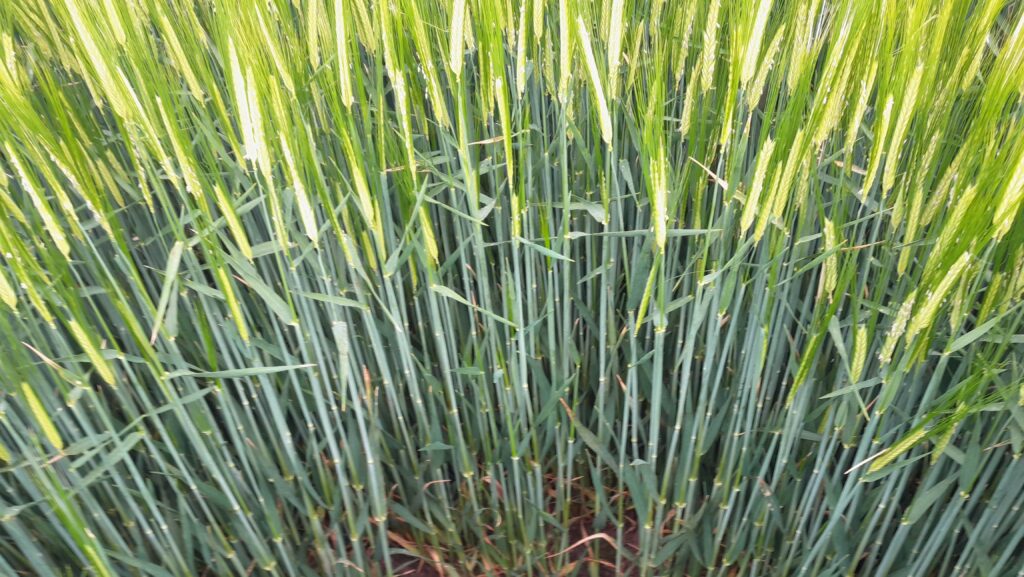Greater yield and margin for winter barley grower
 © MAG/Emma Gillbard
© MAG/Emma Gillbard Scottish grower Neil Ramsay is pushing the boundaries of winter barley production, striving for both yield and margin. He achieved a top yield of 13.5t/ha last harvest and has an impressive five-year average just shy of 10t/ha.
“Winter barley is a consistent performer for us here at Hamish Morrison Farm in the Scottish Borders. The sums are stacking up for bigger input spend, as we’re achieving greater margins from higher yields,” says Neil.
Last year’s13.5t/ha crop from two-row variety Tardis struck gold in the Yield Enhancement Network (YEN) awards for the highest winter barley yield and best yield potential with 81% of 16.7t/ha.
See also: Farmer Focus: A few false starts to spring drilling
Farm standard v YEN spend
Spending an extra £210/ha on fertiliser and fungicide across the 3ha YEN crop proved an effective move to increase yield by 3.5t/ha and improve margin. “We’re pushing the crop and it’s really rewarding us,” says Neil.
Winter barley crops usually receive a total of 200kg liquid nitrogen/ha, applied in a three-way split of 75kg, 75kg and 50kg N/ha. However, the winning 3ha YEN crop received a fourth 50kg N/ha hit, bringing the N applied to 250kg N/ha.
The additional crop biomass spurred on from the heightened N rate called for an extra fungicide pass to protect the canopy from the farm’s biggest disease burden – rhynchosporium.
“A robust three-spray fungicide programme is usually sufficient to keep disease at bay but a fourth spray was applied to protect the crop,” says Neil.
Comparing the farm standard and YEN crop variable costs, a £755/ha spend yielded 10t/ha compared to £970/ha spend which yielded 13.5t/ha – a staggering 3.5t/ha yield boost in the YEN crop.
“The extra spend on increased rates of fertiliser, fungicide and trace elements more than paid for itself,” he says.
“What’s more, there is scope for even greater margin, as this was a year when we bought fertiliser at sky-high prices. The sums add up – I have a firm focus on expenditure and margin and currently the bigger the spend, the bigger the margin.”
With the Scottish government agricultural policy still very much up in the air, Neil plans to continue driving yield and margin in order to sustain the business in light of the declining Basic Payment Scheme.
He also aims to use the YEN programme to take yield and crop nutrition to the next level. But will nitrogen continue to be the key driver?

Neil Ramsay © MAG/Emma Gillbard
Winter cereal establishment
One of Neil’s secrets to growing high-yielding crops is getting winter barley established early so plants have sufficient time to develop deep rooting systems and plenty of tillers.
An early dose of nutrition follows in February to encourage crops to multiply tillers and, equally importantly, hold on to existing ones.
“We clearly see the difference between early- and late-drilled crops. Early crops have greater rooting depths and canopy establishment, which increases yield potential.
“September is often a very busy month for us with harvest and drilling. Being so far north, we are up against the weather to get crops established.”
Neil admits opting for early drill dates with high N rates creates a recipe for lush green canopies, which makes disease control challenging.
The need for a robust fungicide programme is therefore vital, but whenever a pass is made a micronutrition spray is added to the tank mix to reduce potential negative effects from the fungicide actives.
Neil now plans to use micronutrition to its full advantage to promote crop health and tailor crop input requirements and give production programmes that extra attention to detail.
Hamish Morrison Farming also runs a flock of more than 100,000 laying hens which provides plenty of organic manure – inclusion of which has cut requirements of P and K granular fertiliser.
Although hen litter is applied ahead of oilseed rape and winter wheat, Neil does not apply it ahead of winter barley crops to avoid risk of lodging.
“Because of the high biomass crops, lodging can be a real issue. That’s why we apply a plant growth regulator with every fungicide as well.”

Winter barley © Neil Ramsay
Micronutrition
Through involvement with the YEN network and Neil’s interest in discovering more about crop micronutrition, he identified that soils were slightly low in copper and phosphate was locked-up in some.
This season, he applied a micronutrition spray and foliar phosphate product to the winter barley to promote rooting in waterlogged soil conditions, which provided good results.
“We use a product called Crop Lift from Yara, which contains a little of a lot of trace elements. We’ve already applied it to the winter barley, alongside two applications of liquid N fertiliser. We’re now waiting for the third,” he says.
Following such wet winter weather, soil mineral nitrogen levels are lower than usual, so Neil is considering scaling up nitrogen requirements to make up for the shortfall, but this will all depend on crop requirements and the season ahead.
Ploughing and two-row variety performs for winter barley
Despite Neil Ramsay running a non-inversion system for 15 years, the plough is used to establish winter barley and get crops off to a good start.
Ploughing also provides a more suitable seed-bed to get crops established, providing improved rooting potential and enabling effective grassweed control, particularly for brome and meadow grass.
Winter barley drilling usually starts in the second week of September, with a seed rate of 350 seeds/sq m, aiming for a finish date of early October. If drilling later into October, seed rates are bumped up to 400 seeds/sq m.
“Flexibility to cultivations is key. If ground conditions are too wet and we’re running out of time to get crops in, I’m not afraid to use the plough. It is important to get crops in before the weather breaks,” he says.
Neil grows two-row varieties for the feed market such as Tardis, Caravelle and Mountain. He tried hybrids, but often found specific weights would suffer.
“We can get the yield of a six-row from a two-row variety – perhaps the six-row crops are less suited to our silty loam soils,” he says.
The winning YEN crop was drilled on 21 September from the variety Tardis, which was the first time Neil had grown the variety.
The winning YEN crop was drilled on 21 September from the variety Tardis which was the first time Neil had grown the variety.

